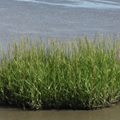 Exegesis were contracted to undertake a review of Spartina anglica in England’s Natura 2000 Sites. This covered its impacts on designated features, effects on accretion and erosion, distribution and extent, and a review of control techniques. A protocol was developed to monitor S. anglica and help identify any negative impact.
Exegesis were contracted to undertake a review of Spartina anglica in England’s Natura 2000 Sites. This covered its impacts on designated features, effects on accretion and erosion, distribution and extent, and a review of control techniques. A protocol was developed to monitor S. anglica and help identify any negative impact.
...
read more